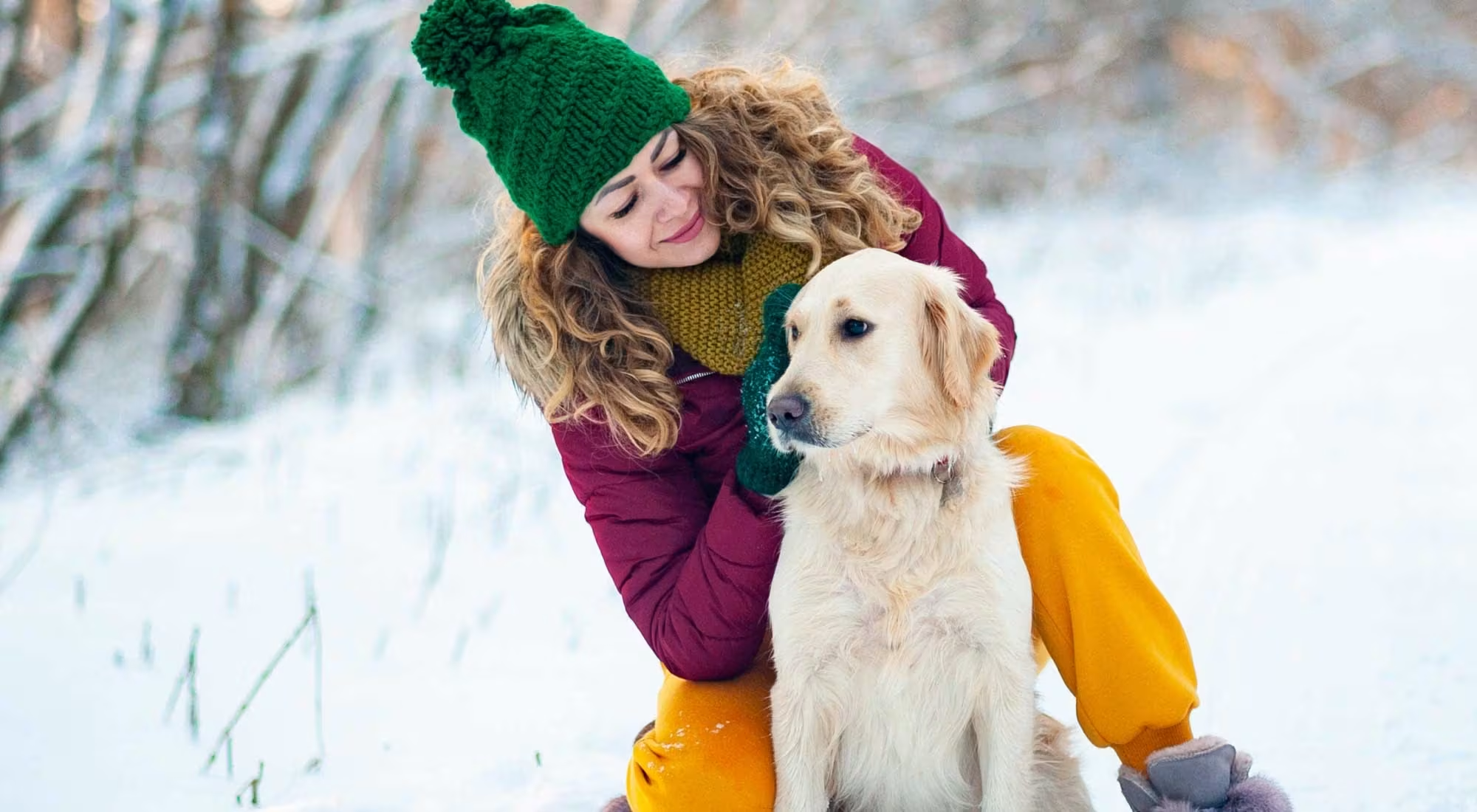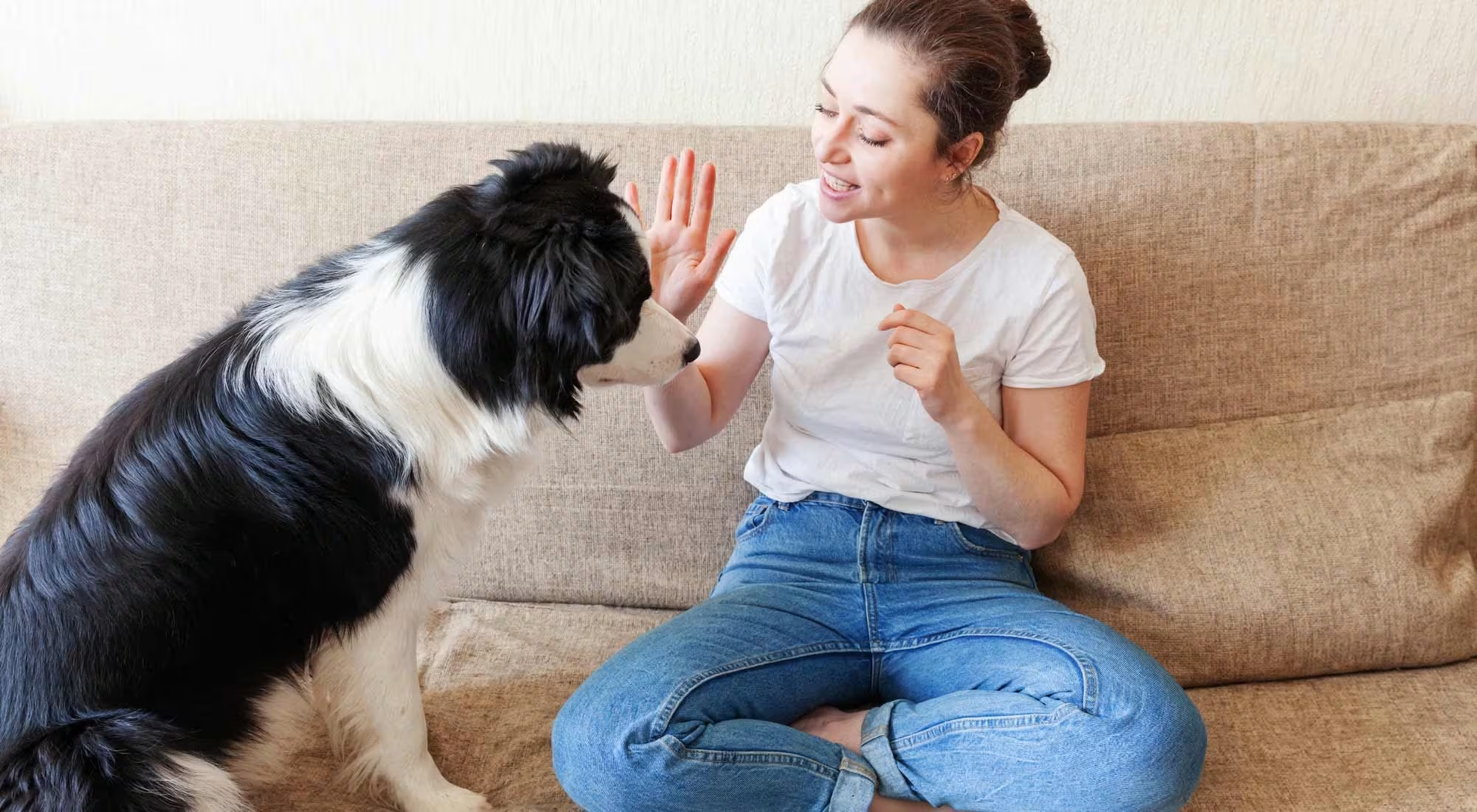Maybe you’ve been meaning to spend more time exploring the great outdoors with your dog, to try out an activity you’ve never done together, or to teach your pup (young or old) some new skills.
Now is the perfect time to discover new activities, or revisit familiar adventures (including an adventure to the vet’s office).
Fun exercise outings
According to a study published in the European Journal of Social Psychology it takes anywhere from 18 to 254 days to establish a new habit. But regardless of how long it takes us to pick up a healthy new habit or behaviour, the great thing about a new year is that it feels like a fresh start, and it gives us lots of time to form new routines.
Regular exercise (for us and our pets) can be one of the hardest practices to pick up, especially when it’s cold out. But the cold weather also presents opportunities to try something new with your dog — something that will appeal to your sense of fun and adventure.
Tobogganing is one of those outdoor winter activities that doesn’t even feel like exercise. While you’re racing down the hill with your dog, it’s pure adrenaline. So much so that you barely feel the work of walking back up to do it all over again.
If the toboggan hill is too high-octane for your taste or your dog’s, cross-country skiing is a lower-intensity option — and one of the best cardiovascular activities available.
Equipment rental facilities and trails are available across Canada and many are dog-friendly with some offering leash-free areas for dogs to run and explore. Whistler Olympic Park, for example, has more than 40 km of dog-friendly ski and snowshoe trails and a large off-leash zone.
If you live in an area that doesn’t get a lot of snow, a winter hike will be just as much fun for you and your dog. Check out the trails you typically visit during the warmer months and get an entirely new perspective on the landscape.
For your dog, there will be new smells to discover and more squirrels to spot (without the camouflage of leaves).
Training and agility
The cold weather isn’t for everyone, especially pet parents with mobility issues for whom the snow and ice can present a real risk. Or for older pets who are averse to the frigid temperatures.
If you’re staying indoors more than usual, work on obedience or agility training — both of which can be done on a small scale in your own home.
Create a small obstacle course for your dog using a set of agility discs wherever you have space. Then use positive reinforcement (treats and praise) to teach them to navigate the course, sitting or stopping at certain points.
Once they’ve mastered it, rearrange the discs and start again. This will not only keep dogs physically active, it will also reinforce obedience commands (stay, sit, etc.) while engaging them on an intellectual level.
A new year is a good time to revisit even the most basic training elements, and it’s important to keep your pet in tip-top shape. Veterinarian Dr. Garrett Schuilenberg says that the colder, quieter months present an opportunity to “really devote some time to try to retrain behaviour that is negatively impacting you or impacting your pet.”
Vet visits and vaccinations
Among the most important ways to keep your pet healthy is to schedule regular vet checkups. Even for younger dogs, routine blood work and physical exams can catch health issues early on, and preventative steps can be taken.
A vet visit in January or February is an opportunity to start the new year with a healthy outlook on the months to come.














































